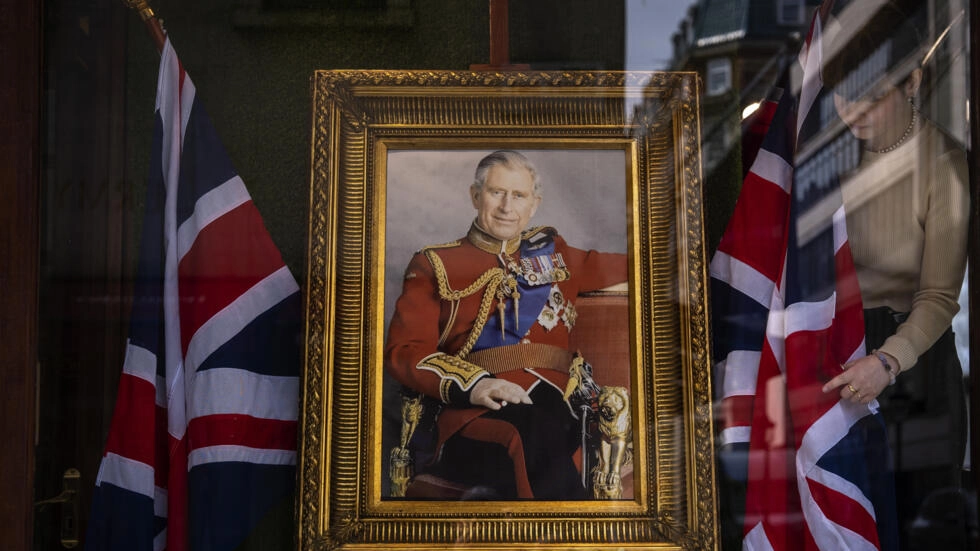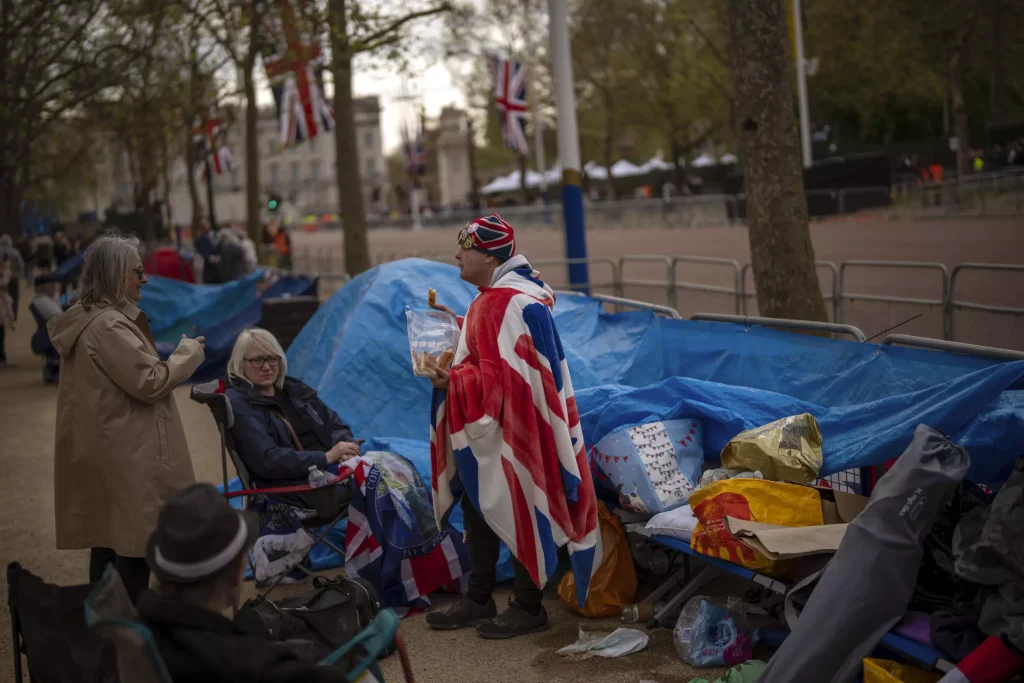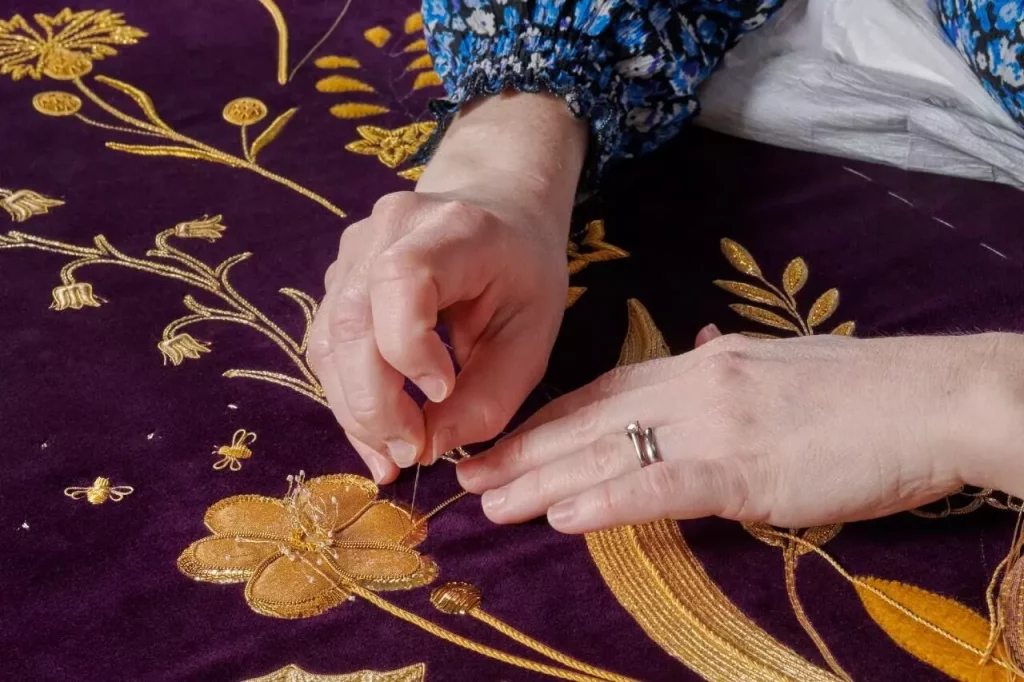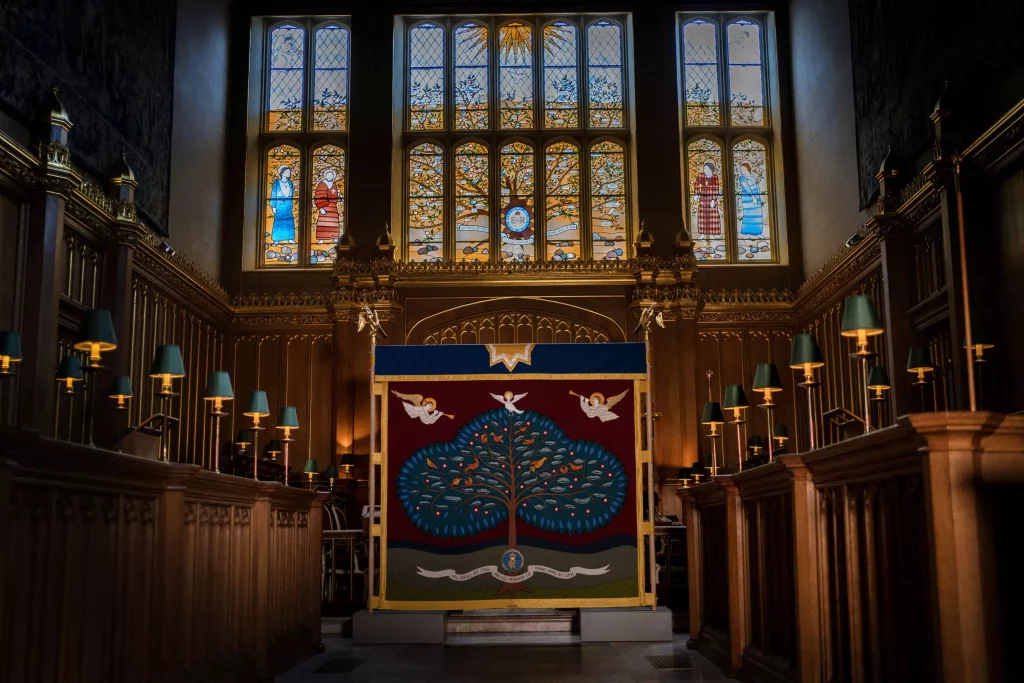
Charles III will be crowned king of the United Kingdom and the Commonwealth Realm nations on Saturday in a ceremony imbued with religious and national symbolism. Yet some significant changes to protocol aim to bring the normally extravagant ceremony down to earth – while retaining some royal mystique.
Many of the rituals and mythical-sounding objects that will be used for the coronation of Charles III draw deeply on national symbolism dating back hundreds – if not thousands – of years.
London’s Westminster Abbey has been a venue for coronations since 1066, and artifacts such as the silver-gilt coronation spoon (used to transfer the holy oil for anointing the monarch) date back to 1349.
During the ceremony, King Charles III will wear the same lavish robes used for his grandfather George VI’s coronation and carry a 17th-century golden orb and sceptre last seen atop the coffin of Queen Elizabeth II.
When he is crowned, the king will sit upon the Stone of Destiny – an ancient and sacred symbol of Scottish monarchy that some historians date back to biblical times.
At its heart, the ceremony will aim to convey the history, tradition and enigma the monarchy embodies.
“It will be a very mysterious-looking ceremony that may look bizarre to many people across the world. But what will look bizarre to some will look mesmerising for others,” says Luke Blaxill, lecturer in British political and constitutional history at the University of Oxford.
Ardent fans are mesmerised already. Along The Mall – the long avenue leading up to the royal residence, Buckingham Palace – committed royal well-wishers began camping out in late April to ensure a prime view of the royal procession to and from the abbey.

Although the ceremony will certainly be opulent, it is intended to be less ostentatious than coronations past.
“This event is streamlined and slimmed down,” says Ed Owens, royal historian and author of “The Family Firm”. “There’s a much greater emphasis on the democratisation of the ritual and the ceremony as a result.”
This approach correlates with a decades-long effort among the royal family to boost its popularity by appearing more accessible, and means a more inclusive ceremony. Women bishops will take part in a coronation for the first time on Saturday, as will representatives of non-Christian faiths. In another first, texts will be read in Welsh, Scottish Gaelic and Irish Gaelic.
The guest list for the ceremony has also been adapted: most of Britain’s 24 non-royal dukes, who normally attend in coronation robes and coronets, are not invited. Some 2,000 guests are expected, including 450 members of the public who have served their communities – a far cry from the more than 8,000 who squeezed into Westminster Abbey for Elizabeth II’s coronation 70 years ago.
A down-to-earth monarch
As this will be the first coronation most viewers have witnessed, the more obscure changes are likely to go unnoticed. Time-consuming rituals, such as presenting the monarch with gold ingots, have been axed to bring the duration of the ceremony to just over an hour.
Other details aim to convey the image of a more down-to-earth royal ceremony, quite literally.
Invitations to the ceremony emphasised the king’s environmentalism, featuring flora from the British Isles and the Green Man, an ancient figure from British folklore symbolising spring and rebirth. State leaders have been encouraged to reduce emissions by travelling to the ceremony on charter flights instead of private jets and key items, such as the king’s coronation robes and throne chairs, are being repaired and reused instead of commissioned.
Symbolic images of nature will be threaded throughout the ceremony; Catherine the Princess of Wales is reportedly considering wearing a floral headpiece instead of a tiara.

Such changes mark a change in approach from the monumental display of royal pageantry for Elizabeth II’s state funeral eight months previously, and may be an acknowledgment that the public could be feeling fatigue from large-scale royal events.
“There’s only a certain amount of public appetite for royal pomp and ceremony, even in Britain,” Blaxill says. “There will be a reduction in the novelty element. And the important background context here is that there’s a cost-of-living crisis – this deliberately, slightly scaled-down ceremony is a quite deliberate attempt to reflect that.”
Even though the ceremony has been “slimmed-down”, estimates of how much the coronation will cost have already drawn backlash amid reports that Charles III’s personal fortune runs into the billions.
Tabloid newspaper “The Mirror” reported British taxpayers will foot a bill of £250 million for the ceremony, with £150 million (€170 million) being spent on security alone. For comparison, it reports that Elizabeth II’s coronation 70 years ago cost the equivalent of £47 million.
Other media outlets have placed the total cost at closer to £100 million, still a seemingly extravagant sum at a time when inflation is pricing some Britons out of purchasing essential goods.
The cost-of-living-crisis is not the only issue giving people pause. After Brexit, a series of short-lived prime ministers and the death of its longest-ruling monarch, Britain has lost the clear sense of national identity a large-scale coronation could help consolidate.
“The coronation is meant to be an event that projects a sense of British self-confidence, but Britain’s had a pretty tough time for the last seven years,” Owens says. “There’s nothing like the same level of positivity or optimism that characterised Elizabeth II’s coronation.”
Royal magic
Britain is far from a nation of ardent royalists; just over a third of British adults feel indifferent towards the coronation.
One ill-fated attempt to make the process less elitist has drawn near-universal ire. Instead of the traditional “Homage of Peers”, during which hereditary peers – historically members of the aristocracy – knelt to pledge their loyalty to the king, the “Homage of the People” will invite viewers at home to swear allegiance to King Charles III and his successors. Critics have called the attempt to democratise the ceremony “tone deaf”.
“Britain is a liberal democracy, where we believe in freedom of speech,” Owens says. “The idea that we are having words put in our mouths as part of this ceremony, and are swearing an oath of loyalty to the monarch and his successors, notably, has been problematic.”
“I think, perhaps, asking people to say, ‘God save the king’ would have been about the limit,” Blaxill adds.
And yet, almost half of adults in the UK plan to watch the ceremony or take part in coronation celebrations over the weekend.
Notable republicans, including Scottish First Minister Humza Yousaf, Welsh First Minister Mark Drakeford and Sinn Fein’s Northern Ireland leader Michelle O’Neill have also said they will attend the ceremony in person.
They are, perhaps, hoping to witness a unique, historical spectacle – if not a moment of royal magic.

As much as the coronation of Charles III has been designed to give the impression of a humbler head of state than his predecessors, he must also retain some of the mystical power that allows people to see him as a monarch and not just a man in a golden crown.
Historically, coronations were deliberately closed off from the public to project a sense of elite power and mystery – and one moment on Saturday will uphold this tradition. The most sacred part of the ceremony, dating back to the 7th century, will happen behind a specially designed screen. During the unction, the most senior bishop in the Church of England anoints the monarch with holy oil, thereby signalling that the king has been chosen by God.
“It’s the moment where the mystique and the spiritual dimensions of the monarchy are made visible through their invisibility,” Owens says. A few minutes during which millions of viewers in Britain, the Commonweath and beyond are invited to suspend their disbelief and make a leap of faith to transform Charles III into a king.


